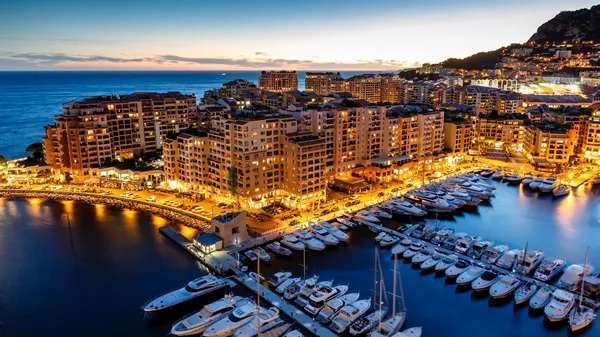The world is adorned with diverse coastlines, ranging from extensive stretches of sandy beaches to rugged cliffs meeting the sea. However, not all countries boast expansive coastal territories; some are endowed with comparatively shorter coastlines. In this comprehensive analysis, we delve into the top 10 countries with the shortest coastlines, exploring their geographical features, economic significance, and environmental characteristics.
Coastline Geography
Before delving into the specifics of the top 10 countries with the shortest coastlines, it’s essential to understand the significance of coastlines in geographical terms. A coastline refers to the interface between land and sea, encompassing various landforms such as beaches, cliffs, bays, and estuaries. Coastlines are dynamic environments shaped by natural processes such as erosion, sedimentation, and tectonic activity.
Coastlines play a crucial role in global ecosystems, supporting diverse marine and terrestrial life forms. Additionally, coastlines are vital for human activities such as trade, transportation, tourism, and recreation. Understanding the characteristics of coastlines can provide valuable insights into the environmental, economic, and cultural dynamics of a region.
Ranking of the Top 10 Countries with the Shortest Coastlines
1. Monaco
With a coastline length of merely 4.1 kilometers, Monaco claims the top spot as the country with the shortest coastline in the world. Nestled on the French Riviera along the Mediterranean Sea, Monaco is renowned for its luxurious yacht harbors, upscale casinos, and picturesque coastal scenery. Despite its limited coastline, Monaco’s strategic location and affluent tourism industry contribute significantly to its economy.
2. Gibraltar
Occupying a small peninsula at the southern tip of the Iberian Peninsula, Gibraltar boasts a coastline length of approximately 12 kilometers. Despite its diminutive size, Gibraltar’s strategic location at the entrance to the Mediterranean Sea has made it a crucial maritime hub for centuries. Today, Gibraltar serves as a vital shipping lane and financial center, leveraging its compact coastline for port facilities and recreational amenities.
3. Tuvalu
Located in the Pacific Ocean, Tuvalu comprises a collection of low-lying coral atolls and islands with a coastline length of approximately 24 kilometers. Despite its remote location and limited land area, Tuvalu’s coastal resources support subsistence fishing and small-scale agriculture, providing sustenance for its sparse population. However, Tuvalu faces significant challenges due to rising sea levels and coastal erosion, threatening its long-term viability.
4. Nauru
Situated in the central Pacific Ocean, Nauru is one of the world’s smallest island nations, with a coastline length of around 30 kilometers. Historically known for its phosphate mining industry, Nauru’s economy has diversified in recent years, focusing on offshore banking and limited tourism. Despite its relatively short coastline, Nauru faces environmental degradation and sustainability concerns stemming from its mining legacy.
5. San Marino
Encircled by Italy, San Marino is a landlocked microstate with a coastline length of zero kilometers. Despite its lack of direct access to the sea, San Marino’s strategic location in the Italian peninsula has facilitated trade and cultural exchange throughout its history. Today, San Marino’s economy relies on tourism, banking, and manufacturing, leveraging its picturesque landscapes and historical heritage to attract visitors.
6. Liechtenstein
Another landlocked microstate, Liechtenstein, nestled in the Alps between Switzerland and Austria, has no coastline. Despite its mountainous terrain and absence of maritime access, Liechtenstein has developed a prosperous economy based on financial services, manufacturing, and tourism. While Liechtenstein lacks direct coastal resources, its landlocked status has not hindered its economic growth or global connectivity.
7. Andorra
Situated in the eastern Pyrenees mountains between France and Spain, Andorra is a landlocked principality with no coastline. Despite its rugged terrain and absence of maritime access, Andorra has cultivated a thriving tourism industry centered around its scenic landscapes and ski resorts. Additionally, Andorra serves as a popular shopping destination due to its duty-free status, attracting visitors from neighboring countries.
8. Luxembourg
Landlocked between Belgium, France, and Germany, Luxembourg is a small European country devoid of a coastline. Despite its lack of direct access to the sea, Luxembourg has emerged as a global financial center and hub for technology and innovation. Leveraging its strategic location in the heart of Europe, Luxembourg has diversified its economy and attracted multinational corporations, contributing to its prosperity and economic stability.
9. Swaziland (Eswatini)
Located in Southern Africa, Swaziland, officially known as Eswatini, is a landlocked kingdom surrounded by South Africa and Mozambique, thus lacking a coastline. Despite its inland location, Swaziland has developed a diverse economy based on agriculture, manufacturing, and mining. While its landlocked status presents logistical challenges, Swaziland’s stable political environment and strategic partnerships have facilitated economic growth and regional integration.
10. Lesotho
Completely surrounded by South Africa, Lesotho is a landlocked country with no coastline. Despite its geographical isolation, Lesotho has developed a resilient economy supported by agriculture, textiles, and hydropower. Additionally, Lesotho benefits from its proximity to South Africa, its largest trading partner, and leverages regional trade agreements to enhance its economic competitiveness.
See Also: Top 10 Countries with the Longest Coastlines in the World
Conclusion
In conclusion, the top 10 countries with the shortest coastlines encompass a diverse array of geographical features, economic activities, and environmental challenges. Despite their limited coastal territories, these countries have leveraged their unique characteristics to foster economic growth, cultural richness, and environmental sustainability. Understanding the complexities of coastline geography and its implications for human societies can provide valuable insights into global dynamics and regional development strategies. As these countries continue to navigate the complexities of a rapidly changing world, innovative approaches to coastal management and sustainable development will be essential for ensuring the prosperity and well-being of future generations.
You Might Be Interested In:























